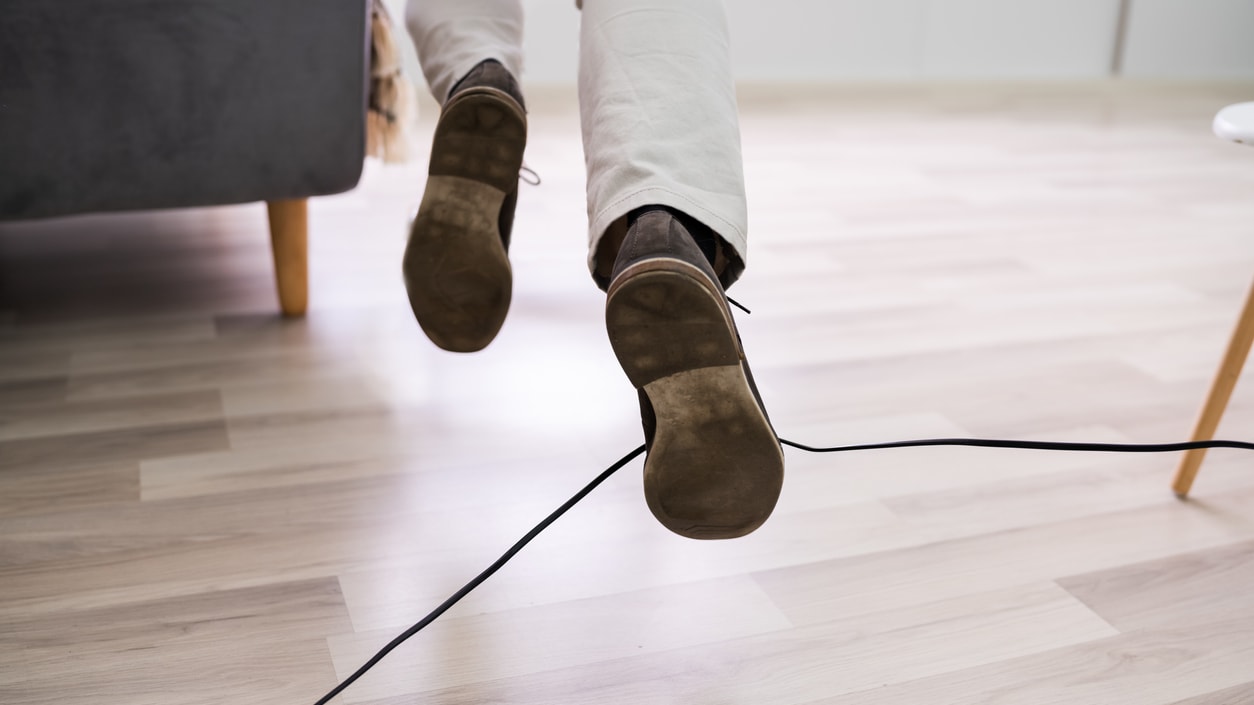Whether tripping over computer cords or their dogs, more remote workers are injuring themselves at home during the pandemic, leading to an increase in telecommuters' workers' compensation claims.
Some workers' claims are legitimate and compensable, while others aren't necessarily so. Determining the difference requires a familiarity with the law, which provides employers with some defenses. In addition, telework agreements can help defeat fraudulent claims, noted Carl "Trey" Dowdey III, an attorney with Swift, Currie, McGhee & Hiers in Birmingham, Ala.
"The blurring of the lines between injuries occurring in the course of and arising out of work versus injuries occurring during off-work status will be difficult to sort through," he said.
"Teleworkers may be doing work while also doing something nonwork-related—such as letting their dog out, talking on the phone to friends, playing with their kids or cooking—and discerning whether the injury was due to work or nonwork actions may be challenging," he said. "Some defenses will likely become more difficult to prove with unwitnessed teleworker injuries taking place away from an employer's normal place of business."
Some Claims Will Be More Familiar than Others
At-home workers' claimed accidents and injuries often will resemble those experienced in the employer's facilities, said Thomas Robinson, J.D., a Durham, N.C.-based co-author of Larson's Workers' Compensation Law (Matthew Bender, 2020).
"Office workers usually sustain trip-and-fall, lower-back strain, carpal tunnel syndrome injuries and the like," he said. "My feeling is that those same sorts of injuries will be sustained, on average, by at-home workers since their jobs, as such, haven't radically changed."
Added to those typical injuries may be miscellaneous claims, such as tripping-over-the-dog cases, which at least one court has ruled arose out of employment and may be compensable, and another decided wasn't.
With increased remote work during the pandemic, employers will have a more difficult time showing that falls resulted from household rather than employment risks, Robinson predicted. That's partly a result of more employers adjusting to the realities of child care and other personal issues, with some organizations allowing workers more freedom in when the work gets done, he said.
The workers' compensation requirement that injuries arise out of and in the course of employment to be compensable "works best where one's hours and location are set," Robinson stated. "One problem here is the fact that many courts will say to the employer, 'You had the option of allowing work at home and you chose that option. You may not now complain about the work conditions at the home. You should have taken a more active role in setting the safety of the work.' "
Defenses
In addition to arguing that injuries didn't arise out of and in the course of employment, employers have other defenses they can raise to workers' compensation claims, including teleworkers' claims. Dowdey said these defenses include:
- Notice defenses centering on whether the teleworker gives timely and appropriate notice to a supervisor of the injury.
- Misrepresentation defenses, which he said may become increasingly important when a teleworker with a pre-existing condition feels emboldened to game the system and claim a work injury. Ensure that proper warnings against such fraudulent misrepresentation are clearly set out in writing in any hiring documents, he recommended.
Occupation-related disease claims require a plaintiff to establish causation by showing that the disease is due to hazards that exceed those in ordinary employment and differ from those found in the general run of occupations, he said. Medical testimony is not required to prove these requirements, he added.
"Should claimants happen to telework in a residence or structure that has such hazards—for example, toxic mold—an employer could be exposed to an unexpected liability," he said. "Credibility would become key with any such claim," especially if it arises only after an employee starts to telework.
Because telecommuting injuries often are unwitnessed, the employee's prior work history, integrity, and diligence in following telework policies and timeliness as to reporting any claims will be important, he said.
Telework Agreement
Comprehensive telework agreements are essential to prevent or defeat fraudulent claims, Dowdey said.
He noted that an agreement should specify the teleworker's:
- Required job duties.
- Expected work product.
- Expected job location.
- Job hours and how the employee clocks in and out, as well as the repercussions for not doing so.
- Allowed break times.
These issues should be laid out in more detail, he said. "Such details would need to include when a teleworker may travel back to the employer's physical jobsite, as well as the procedure for providing notice and filing a workers' compensation claim," he said.
Employers may wish to set out in the telework agreement the right to inspect a residence after a claimed work injury, he said.
"If the telework agreement sets a specific time frame or time limit for the arrangement, the agreement should also make clear that it is not creating a guarantee or contract of employment for that time," said Crystal McElrath, an attorney with Swift, Currie, McGhee & Hiers in Atlanta. "The telework agreement may be terminated at any point, as may the overall employment."
[Need help with legal questions? Check out the new SHRM LegalNetwork.]
Additional Steps
Employers should obtain acknowledgments that each employee understands he or she must report accidents immediately, said Angelo Filippi, an attorney with Kelley Kronenberg in Fort Lauderdale, Fla. The acknowledgment should provide consent to an investigation of the accident, including inspection of the premises on which the accident occurred, he said.
Employers also should check with their workers' compensation and general liability brokers or carriers to ensure that all appropriate coverages apply to those employees who work from home, said Ellen Bronchetti, an attorney with McDermott Will & Emery in San Francisco.
An organization run by AI is not a futuristic concept. Such technology is already a part of many workplaces and will continue to shape the labor market and HR. Here's how employers and employees can successfully manage generative AI and other AI-powered systems.




